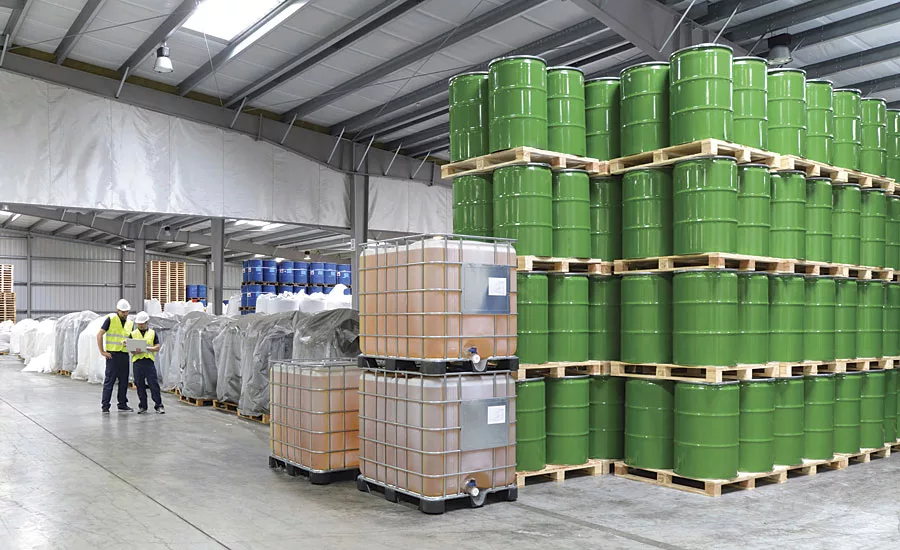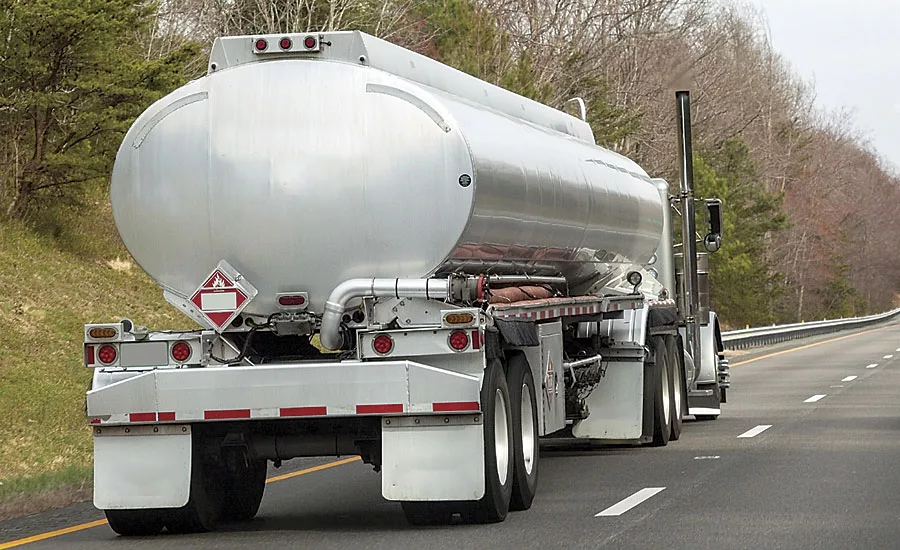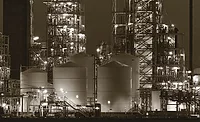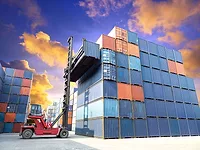NACD and Member Companies are Vital to the Chemical Supply Chain


The National Association of Chemical Distributors (NACD) is an international association based in Arlington, Virginia, with more than 430 chemical distribution companies and their supply-chain partners. NACD member companies represent more than 85 percent of the chemical distribution capacity in the nation and generate 93 percent of the industry’s gross revenue. NACD members, operating in nearly every U.S. state through more than 3,000 facilities, are responsible for more than 75,000 direct and indirect jobs in the United States. Chemical distributors in the U.S. are predominantly small regional businesses, many of which are family owned and multi-generational. The typical chemical distributor has 26 employees and operates under an extremely low margin.
NACD members meet the highest standards in safety and performance through mandatory participation in NACD Responsible Distribution®, the association’s third-party-verified environmental, health, safety and security program. Through Responsible Distribution, NACD members demonstrate their commitment to continuous improvement in every phase of chemical storage, handling, transportation and disposal operations. Owners and operators of NACD member companies have a personal stake in the safety and security of their employees, companies and communities. They demonstrate this through their commitment to Responsible Distribution, relationships with employees, involvement in local communities - including participation in Local Emergency Planning Committees - and careful compliance with numerous environmental, safety and security regulations at the federal, state and local levels.
Economic and Safety Information
NACD’s membership sells into a diverse array of market sectors, including agriculture, construction, pharmaceuticals, personal care products, oil and natural gas, paints and coatings, water treatment, and more.
In fact, the chemical industry touches 96 percent of all commerce in the U.S. NACD’s membership plays an important role in the supply chain to make this happen. The association’s membership annually generates nearly $31 billion in sales, delivering products to their 750,000 customers every six seconds while driving 415 million miles with private and third-party truck fleets. They deliver nearly 31 million tons each year, with the average shipment valued at nearly $6,000.
While NACD members’ economic impact is a key component of the U.S. market, the measures they take through Responsible Distribution ensure their products are handled onsite and transported with the highest levels of safety in mind. As a testament to the success of the program, this level of safety is reflected in the incident data they report annually. In 2017, the most recent data available, NACD members reported only one incident for every 9,000 shipments, a 33.8 percent decline over the last seven years. On top of that, small firms average just 0.28 incidents per million dollars in net sales. Large firms average even fewer, at just 0.009 incidents per million dollars in net sales. These results show that even operations with minimal staff and resources are focused on safety.
Policy Issues Impacting Chemical Distribution
Chemical distribution is an important part of the U.S. economy. While distributors have weathered the most recent economic downturn better than many industries, there are a number of legislative and regulatory issues that currently affect their ability to ensure continued economic growth and job creation. The ongoing truck driver shortage, developments in the U.S. trade agenda under President Trump, chemical facility security and freight rail challenges all pose significant hurdles for business success in 2019.
Trucking Shortage
There are few issues as vital to chemical distribution as having a vibrant trucking sector. Unfortunately, for many years the U.S. has been facing a shortage in the number of qualified truck drivers. The American Trucking Associations (ATA) estimates that the U.S. would be short 63,000 drivers by the end of last year, and that number could balloon to 174,000 unfilled driver positions by 2026. In order to keep up with demand, ATA estimates that the trucking industry would need to hire nearly 90,000 drivers each year through 2026. If this shortage is not addressed, carriers, shippers and businesses like chemical distributors will continue to see increased costs.
One of the major drivers behind the shortage is an aging workforce. The median age for a truck driver is 49 or higher, and as the older population begins to retire, one can only expect the shortage to get worse. This is exacerbated by the fact that the current age limit for interstate trucking is 21 years old and that a patchwork of state laws impose high insurance requirements on younger people getting started in the industry, meaning a young, vibrant workforce seeking high-paying, stable employment is going untapped.
To address these challenges, NACD supports efforts in Washington, D.C. that would make it easier for young people to enter the workforce as truck drivers. There are a couple of solutions currently in the works that would serve as a big step to making this happen. First, the Trump administration is seeking to advance a pilot program that would allow drivers under 21 years old to engage in interstate trucking. Second, under the last Congress, the U.S. Senate and the U.S. House of Representatives both introduced the DRIVE Safe Act, which would lower the interstate driving age to 18 years old and would implement a rigorous two-step training program, increasing safety while bolstering the workforce.
Trade
NACD works closely with Congress and the administration to ensure trade policies continue to afford American businesses, like chemical distributors, opportunities to thrive in today’s competitive global economy. Distributors play a key role in today’s complex global supply chain - which has taken Americans decades to build and reflects our nation’s strengths and those of its trading partners. Years of trade relationships cannot be shifted overnight; therefore, it is imperative that we continue to honor the relationships that have strengthened our economy.
The U.S. trade agenda under President Trump has the potential to significantly impact the chemical distribution industry, in some ways positively and in others negatively. On the positive side, last year Congress approved, and President Trump signed, legislation that would reauthorize the Generalized System of Preferences (GSP) program, which had previously lapsed. GSP provides U.S. importers with tariff relief on nearly 5,000 products from 120 developing countries. Effectively, it saves American businesses $730 million in tariffs each year. Without it, importers would have to pay an estimated $2 million a day in new taxes on thousands of different products.
Similarly, the Miscellaneous Tariff Bill (MTB) was signed into law in the second half of 2018. This legislation provides tariff relief on more than 1,600 imported products unavailable domestically in the United States. The tariffs on these products had been costing domestic companies $1 million a day. Additionally, failure to approve the MTB, which expired in 2012, would have cost importers $1.1 billion in tariff payments over the next three years if this legislation wasn’t signed into law. Taken together, the renewal of GSP and MTB will produce significant savings for chemical distributors that can be invested back into their companies and ultimately the broader U.S. economy.
Unfortunately, President Trump’s decision to impose high tariffs on a broad range of Chinese products imported into the United States will offset gains from the above programs as well as recent tax reform legislation that lowered corporate tax rates. Last year, the administration unilaterally established a 10-25 percent tariff on a range of imports from China. The tariffs were imposed under Section 301 of the Trade Act of 1974, which authorizes the president to act on foreign practices deemed burdensome or restrictive to U.S. commerce. Recently, the administration announced they are increasing those rates to 15-30 percent.
Hundreds of chemical products are included in the third list of products under the Section 301 tariffs, and many other goods that require chemical inputs are included on the new list 4. Many chemical distributor companies lack the time needed to shift suppliers. Multiple studies by NACD show a direct link between tariff increases and reduced chemical sales - simply put, lower volumes result in job losses. NACD long urged the administration to establish an exclusion process for list 3 products to mitigate some of these increased costs, which was finally put into place earlier this summer.
Chemical Facility Security
Ensuring the security of high-risk chemical facilities is a vital part of the United States’ national security efforts. To protect these facilities from potential acts of terrorism, in 2007 the U.S. Congress created the Chemical Facility Anti-Terrorism Standards (CFATS) program to be administered by the U.S. Department of Homeland Security (DHS). NACD has been a long-time partner with DHS since CFATS was first created, and the association has been adamant about ensuring the continuation of the program.
In January, Congress approved legislation that would extend CFATS in its current form for another 15 months, as it was set to expire that same month. However, given the upcoming presidential and congressional elections in 2020, industry and lawmakers need to make progress this year on securing a longer-term reauthorization in order to avoid election-year politics that could bog down the legislative process.
Therefore, NACD’s priorities are to obtain a multi-year reauthorization of the CFATS program prior to its April 2020 expiration; to provide industry with the certainty needed to make long-term facility security investments and enable DHS to run the CFATS program efficiently; to ensure the CFATS program properly protects against security threats at NACD member facilities; and to establish a CFATS Recognition Program, an alternative compliance option to reward participation in industry stewardship programs that further enhance chemical security, like Responsible Distribution.
Rail Reform
Roughly 40 percent of NACD’s member companies receive product via railroad, while only a handful of companies ship product out of their facilities by rail. Still, freight rail is an important component in the movement of goods for chemical distributors. NACD supports efforts that serve to promote greater freight rail competition and improve the efficiency and effectiveness of the U.S. Surface Transportation Board (STB) which oversees freight rail service. Unfortunately, due to consolidation in the rail industry over the past three decades, most chemical distribution companies that rely on rail have service by only one railroad - subjecting them to higher freight rates, capacity constraints and service issues. One major issue with rail service is that companies have a hard time gaining access if tracks are not present, or if service to specific lines has been either reduced or discontinued. Demurrage costs set by the railroads are also concerning, particularly when railroads fail to meet on-time deliveries and customers are faced with the bill.
Coal and crude oil shipments have also decreased car load availability in the past few years. In order to achieve greater operational ratios, regain market share lost to highways and meet chemical transport demands, Class I railroads have started implementing what is known as “precision scheduled railroading” (PSR). CN, Canadian Pacific, CSX, Union Pacific, Norfolk Southern and Kansas City have all announced similar PSR plans to meet growing traffic demands. The result of PSR, however, is causing nationwide service disruptions to shippers, specifically chemical distributors. Shippers continue to experience inconsistent and unreliable service, while the railroads claim that transitional results and higher-quality service are their end game. This is an issue that a fully functioning STB as mandated by Congress can work to address.
M&A Activity
Over the past few years, the U.S. chemical distribution industry has been experiencing a significant amount of merger and acquisition activity. Larger chemical distribution companies are looking to expand their regional footprints, while regional distributors are acquiring smaller distributors to become industry players on a broader scale. Investment from foreign distribution firms, particularly from Europe and Japan, has accentuated this trend as they attempt to break into new markets.
Private equity firms are also playing an increasingly larger role in bringing about the consolation of the U.S. chemical distribution industry. This is due in part because these firms have greater cash on hand to invest in mid-sized companies, and because U.S. interest rates have been at historically favorable levels for a number of years and thus financing is widely available.
Lastly, advancements in technology are making it more attractive for smaller firms to be acquired by larger companies as they look to boost efficiency. New tools like inventory tracking technology, artificial intelligence and online product marketplaces are rapidly changing the nature of chemical distribution. Smaller companies may find they cannot keep up and look to larger companies with the resources to invest in those technology to make sure they can keep pace with the changes.
All of these factors mean that consolidation in the U.S. market will likely continue for the foreseeable future, although perhaps at a slowing pace over time as fewer opportunities for acquisitions becomes more commonplace.
Paint and Coatings
Based on data from the Bureau of Economic Analysis (BEA), $27.60 of every $100 of paints and coatings produced in the U.S. consists of chemicals like industrial gases, basic organic/inorganic chemicals and resins used by manufacturers in their production process. Of course, this does not include all the chemicals in purchased paints and coatings that are combined into a new product. This figure compares with 10.8 percent of the overall cost of paints and coatings going to wages and benefits for company workers.
Paint and coatings sales have been growing rapidly in recent years. Between 1997 and 2016, paint and coatings manufacturers’ sales are up by 42.2 percent, for a compound annual growth rate of 4.8 percent per year. This is slightly below the 5.1 percent growth in the overall economy during the same period.
According to the American Coatings Association (ACA), the largest drivers impacting the coatings industry overall are the rising needs in the construction and automotive sectors, with the architectural segment alone accounting for half of the market. The trends therefore are problematic and may be a big reason why paint and coating sales have not kept up with overall economic activity.
To keep up sales, paint and coatings manufacturers will need to develop new markets outside of the automotive and construction sectors. According to the ACA, the industrial and special purpose segments have contributed to the growth of the paint and coatings market with demand for products like marine, antimicrobial and corrosion-resistant coatings all increasing in recent years.
Well-Positioned for Success
U.S.-based chemical distributors face a number of challenges in the years to come. From changes in the marketplace to government policies that have the potential to reduce economic output, distributors must be savvy in navigating this complex landscape. Fortunately, NACD members are well-positioned to take advantage of opportunities when they arise while demonstrating their commitment to safety and government regulators through their participation in Responsible Distribution. By advocating for policies that reduce red tape and unleash their ability to create jobs, and by adjusting to changes in the sector’s relationship with suppliers and customers, NACD members are poised to ensure the conditions are right for continued success.
Looking for a reprint of this article?
From high-res PDFs to custom plaques, order your copy today!






